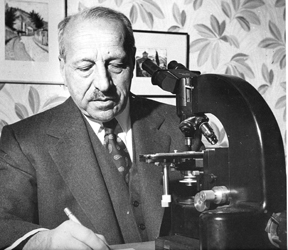Several weeks ago, the U.S. Food and Drug Administration approved the Cobas HPV test as a primary screening method for cervical cancer. As the first alternative to the familiar Pap smear ever to be green-lighted by the agency, this is big news. If gynecologists and other health practitioners adopt the FDA’s recommendations, it could change women’s experience of and relationship to cancer screening, a process we undergo throughout our adult lives. The HPV test probably won’t replace the Pap smear anytime soon, but it could pose a challenge to the diagnostic’s sixty-year standing as the undisputed first-line defense against cervical cancer.
The Cobas HPV test, manufactured by Roche, works by detecting fourteen high-risk strains of the human papilloma virus, including HPV 16 and HPV 18, the pair responsible for 70% of all cervical cancers. (The Centers for Disease Control estimates that 90% of cervical cancers are caused by a strain of HPV.) If a patient tests positive for HPV 16 or 18, the new FDA guidelines recommend a colposcopy to check for cervical cell abnormalities. If she tests positive for one of the other twelve high-risk HPV strains, the recommended follow-up is a Pap smear to determine the need for a colposcopy. But critics fear that the new guidelines will lead to overtesting and unnecessary procedures, especially in younger women, many of whom have HPV but will clear the virus on their own within a year or two. Biopsies and colposcopies are more invasive, painful, and expensive than Pap testing, and might increase the risk of problems with fertility and pre-term labor down the road.
When George Papanicolaou began the experiments in the 1920s that would lead to the development of his namesake test, cervical cancer was among the most widespread forms of the disease in women, and was by many accounts the commonest. It was also deadly. With no routine method to detect early-stage cancers, many patients weren’t diagnosed until the disease had already metastasized. Even for those who heeded the symptoms of irregular bleeding and discharge, medicine offered little by way of treatment or cure. As Joseph Colt Bloodgood, a prominent surgeon at Johns Hopkins Hospital, grimly observed in 1931, cervical cancer “is today predominantly a hopeless disease.”
Papanicolaou, a Greek-born zoologist and physician, spent his days studying the menstrual cycle of guinea pigs at Cornell University Hospital in New York City. Using a nasal speculum and a cotton swab, he extracted and examined cervical cells from the diminutive animals. Eventually he extended his work to “human females,” using his wife, Mary, as a research subject. He discovered that his technique allowed for the identification of abnormal, precancerous cells shed by the cervix. After a few false starts—his first presentation of his work was at a eugenics conference in 1928 and was panned by attendees—he went back to the lab, spending another decade on swabs and slides. By 1941 he had gotten his ducks in a row, and with a collaborator he published his results in a persuasive paper that was quickly embraced by colleagues. Thus was born the Pap smear.
The Pap smear is not an infallible diagnostic. It can’t distinguish between cells that will become invasive and those that will never spread outside the cervix. Results can be ambiguous and slides are sometimes misread. Nonetheless, the Pap smear was a breakthrough at the time because it detected precancerous changes in cervical cells. It upended the customary timeline of cervical cancer, pushing the clock back by enabling diagnosis of the disease at a stage when lesions could be treated with relative ease and success. Since its introduction, it has contributed to a remarkable reduction in American mortality from cervical cancer, from 44 per 100,000 in 1947 to 2.4 per 100,000 in 2010, a roughly eighteenfold decrease in just over sixty years.
When women in the U.S. die from cervical cancer today, it’s generally because they never had a Pap test, hadn’t had one within the past five years, or failed to follow up on abnormal results with appropriate treatment. The problem isn’t with the test itself; it’s with uneven access to screening and follow-up care. These are issues of class, geographic location, insurance status, and health literacy that the HPV test will do nothing to address. The Pap smear may not be perfect, but when utilized correctly it does a pretty good job of detecting cervical cancer. The FDA’s approval of the Cobas HPV test as a first-line defense and its new cervical cancer screening guidelines have the potential to subject millions of women to decades of invasive, expensive procedures, upending six decades of established practice for a protocol with no clear gains in effectiveness. And that is a very big deal.
Sources:
Siddhartha Mukherjee, The Emperor of All Maladies: A Biography of Cancer. New York: Scribner, 2010.
Ilana Löwy, A Woman’s Disease: The History of Cervical Cancer. New York: Oxford University Press, 2011.
Monica J. Casper and Adele E. Clarke, “Making the Pap Smear into the ‘Right Tool’ for the Job: Cervical Cancer Screening in the USA, circa 1940-95,” Social Studies of Science 28 (1998): 255-90.
Joseph Colt Bloodgood, “Responsibility of the Medical Profession for Cancer Education, with Special Reference to Cancer of the Cervix,” American Journal of Cancer 15 (1931): 1577-85.
Statistics on cervical cancer from the National Cancer Institute at http://seer.cancer.gov/statfacts/html/cervix.html.
